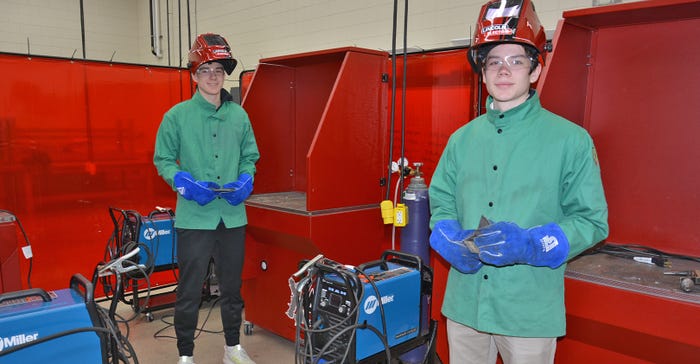
When a community and its school system are in synch with a goal, nothing is impossible.
After years of watching student interest decline in vocational-technical classes and ag careers, and its FFA program fade away, community and school leaders in Redwood Falls said enough is enough.
Local businesses needed workers with trade skills and knowledge of ag basics. It was time to organize and change the direction.
Taking baby steps at first, school leaders attempted to renew student interest by hiring ag teacher Lisa Orren, a Redwood Valley graduate. School leaders assured Orren that she had their support as well as backing of a strong FFA alumni organization. Still, the school’s ag program faced challenges with aged facilities. Community and school leaders then got together and held a community vision meeting. They discussed what they wanted to see in terms of student success, community access and involvement and potential facilities. Some made visits to other school districts to see what they had for facilities and programs.
The underlying goal was to provide an accessible facility for use by both the school and the community — facilities that could be provide flexible space, both for youth and adult training, and the latest in skilled trades technology.
“In the beginning, we talked about this being a four- to five-year project,” says school district superintendent Rick Ellingworth. “But there was concern that we might lose momentum. Then [local resident and attorney] Orrin Estebo said we need more trades and agricultural classes, and he offered $1 million to the school to move the project forward.”
That was in 2017.
Residents and more businesses rallied behind the effort, allowing the district to fund the project with reserves and a lease levy. By May 2018, community and school leaders broke ground for a $4 million building and remodeling project. Construction workers dedicated themselves to the task that wet summer, even with losing 26 work days to the rain. By January 2019, young students and adults moved in for instruction.
The new addition and remodeled woodshop, music and flex areas include space for a business lab, a health room for teaching and certification in nursing and emergency medical training, a high-tech grow lab with a computer-controlled environment, and an ag/animal room with clean/dirty areas and moveable pens.
Community and school leaders also recognized that those new and remodeled spaces would need to be properly equipped. So, they set an additional financial goal of raising $500,000. This money would be used for equipment purchases over the next five years.
“We were blessed by a ton of support, voter approval and private gifts,” Ellingworth says. “Not one person said this is a poor idea. On the contrary, we heard people say, ‘It’s about time.’”
Today, thanks to dedicated school leadership and staff, Redwood Valley High School has a robust FFA chapter. Students in grades seven through 12 participate in classes on carpentry, welding, small engines, wildlife, animal science, vet science, small animals and horticulture.
Orren and Andrew Lueck, ag teachers and FFA advisors, are continually on the move with their students. Orren teaches the ag-related classes, including the new Freshman Academy, a ninth-grade requirement that allows students to rotate through four classes during the school year: agriculture, industrial tech, family and consumer sciences, and science. Lueck teaches classes in welding, small engines, horticulture, wildlife and carpentry.
“FFA has really evolved here,” Orren says. They had 184 students enrolled in the fall with about 35 consistently active members. Last year, they took 42 students who had qualified in an FFA event to the state convention in St. Paul.
Rather than wait until high school to introduce students to potential careers, Redwood Valley requires seventh and eighth graders to do two job-shadowing experience each year. And seniors can participate in a career mentorship program at a local business and get paid while learning the job.
The younger students learn about potential careers, Lueck says, and the older ones have real world work experiences and learn how to interact and communicate in the business world.
Ellingworth credits school staff with attracting students to try new classes and to help them learn about possible careers.
“You can have the greatest space in the world, but if you do not have the staff that will work with kids in relevant ways, you won’t have things like this happen,” he says. “We have a phenomenal staff.”
Community members have also been appreciating having new space at the school for meetings and events. One of the large classrooms is free for community use if no school activity has it scheduled. Groups such as the Minnesota FFA Foundation, the Southwest Initiative Foundation and a local Girl Scout troop have held meetings there.
“The public-private pride in this place is enormous,” Ellingworth says. “We want this to be much more than a school.”
About the Author(s)
You May Also Like






